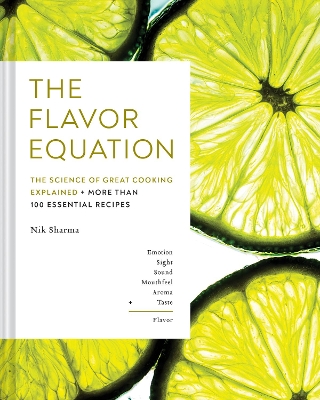Reviewed by annieb123 on
The Flavor Equation is a science-based guide to flavor and sensory experience with accompanying recipes developed by Nik Sharma. Due out 27th Oct 2020 from Chronicle Books, it's 352 pages (print edition) and will be available in hardcover and ebook formats.
Most cookbooks (even niche ones) are arranged thematically: breakfast, lunch, dinner, drinks, etc. Some of them have styling and serving advice in addition. This recipe collection is not at all like the usual cookbook presentation. First, the author spends roughly 16% of the book's content exploring the basis of taste, how we experience taste, mouthfeel, scent, and the roles they play in emotion and perception. There are a lot of interesting takeaways here and while many of them are interesting in their own right, there are also practical bits of information which can be utilized in other non-cooking situations.
The recipes themselves are varied and interesting and represent a number of different world cuisines (some emphasis on the Indian subcontinent). They are arranged thematically: brightness, bitterness, saltiness, sweetness, savoriness, fieriness, and richness. The book is lavishly and appealingly illustrated with large clear recipe and serving photographs. Each of the recipes includes yields, prep and cooking time, ingredients (including metric measurements, yay!), a short description, and step by step instructions. The recipes also include a flavor profile and the reasons for the author's selection of certain ingredients. Nutritional information is not included. The appendices include staples (including spice blends), menu serving suggestions, some info on flavor science (which goes into delightful detail about the molecular components of the food we eat and what they mean for us biologically), a bibliography and links for further information and an index.
This is a wonderfully in-depth book which can also be used on a much less complex basis by simply following the author's suggestions in the recipes. I was impressed on a lot of levels. Definitely one which will appeal to all the bio-nerds, but also to keen cooks looking for more theoretical information for developing and varying their own recipes.
Four stars.
Disclosure: I received an ARC at no cost from the author/publisher for review purposes.
Reading updates
- Started reading
- 11 September, 2020: Finished reading
- 11 September, 2020: Reviewed
